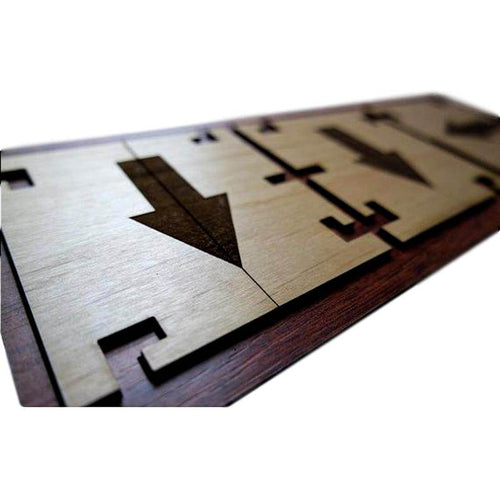The History of Japanese Puzzle Boxes
Japanese puzzle boxes (Himitsu-Bake) have fascinated people for generation. Also known as trick boxes, lock boxes, and secret boxes amongst other names are well known for their artistic qualities and intricate design.
Many; however, do not know the interesting history of Japanese puzzle boxes.
Origins of Japanese Puzzle Boxes
The first reference of Himitsu-Bako (translates to personal secret boxes) can be traced back to the journal Onsen Miage Hakone-sou that translates to Hakone Hotspring Souvenirs.
Originally, they were called Sikake-Bako (trick box) or Tie-Bako (idea box). As the name of the journal suggest Japanese puzzle boxes originate and are still made to this day in the Hakone-Odawara region.
Modern day Himitsu-Bako can be traced back to three master craftsman: Mr. Takajiro Ohkawa, Mr. Kikukawa, and Mr. Tatsunosuke Okiyama.
Using a technique known as Yosegi-Zaiku they created the first generation of Japanese puzzle boxes and become the original Himitsu-Bako Master Craftsman.
Popularity for these puzzles boxes initially started from the need of workers and seamen to keep documents and tools safe.
Each box required a specific combination known only to the owner, which for the time, kept personal effects secure.
Over time, the puzzle boxes become quite popular among tourist and travelers. Hakone is located on a main highway between Osaka (commercial center) and Edo (the nation’s capital at the time) called Tokaido.
This, in combination with the hot springs created sizeable demand for the puzzle boxes.
The Art of Crafting Japanese Puzzle Boxes
Himitsu-Bako are more than just puzzle boxes, they are works of art. Each one is painstakingly handcrafted by master craftsman of the Hakone-Odaware region.
The wood for the intricate geometric designs come from a variety of trees common to the area such as:
- White – Spindle Tree, Dogwood
- Yellow – Wax Tree, Lacquer
- Light Brown – Japanese Pagoda Tree, Cherry Tree, Zelkova Tree
- Dark Brown – Keyaki-jindai
- Gray – Honoki
- Black – Katsuri-jindai
There is no paint used on the boxes to achieve their trademark aesthetic. Instead, the master craftman employ the technique of Yosegi-Zaiku. Yosegi-Zaiku is a type of Japanese parquetry where geometric designs are created by laying different colored strips of wood together.
These strips are then glued and pressed together.
Once this process is complete they are then shaved into impossibly thing strips measuring .004” thick.


0 comments